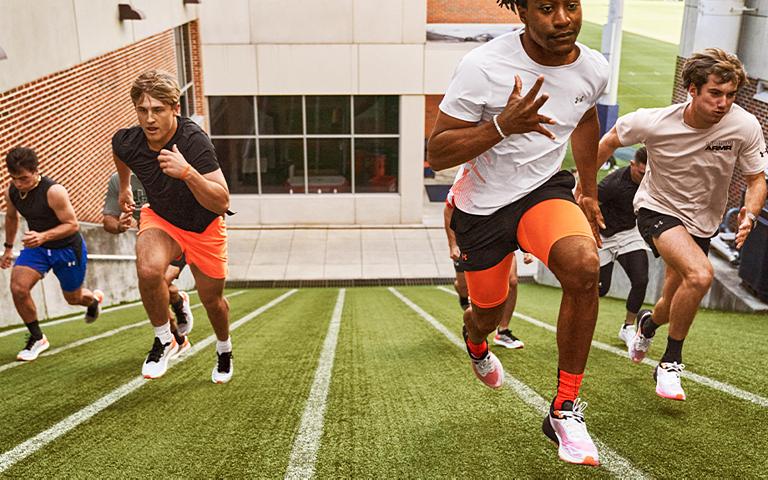-
Guides
- How to Choose Your Running Shoes
- Tips to Perfect Your Golf Swing for Distance and Accuracy
- UA Infinity Sports Bra 2.0
- What to Wear for a Summer Hike
- Why Running Should Be in Your Off-Season Training Plan
- How to Choose the Perfect Basketball Shoes
- How to Improve Recovery After a Football Match
- How to Train for a Marathon
- What To Wear Running In Winter
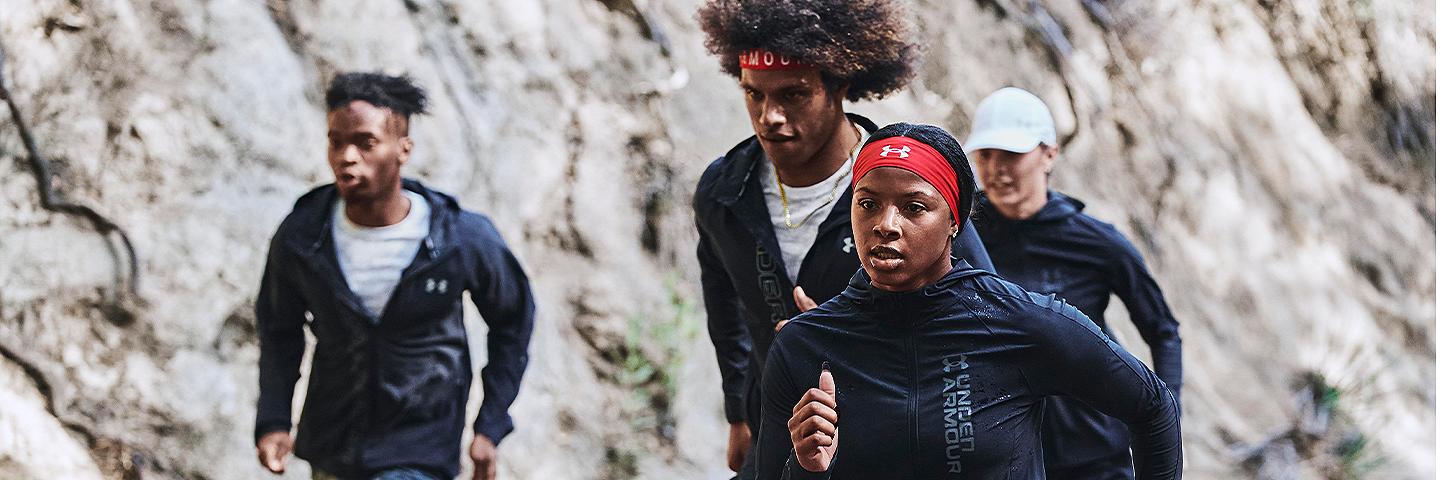

What to Wear Running in Winter
Are you an avid runner, who enjoys pounding the pavement at 6am and challenging yourself to hit your next PB or km milestone? Then you know how important it is to have the right gear to back you. From running shoes to shorts and even headphones can make or break your running performance. This has never been truer when talking about running in winter. Not only does the morning frost add an extra chilly roadblock for us to push through, but you need to be well-dressed to face the elements without overheating. It’s a fine balance and in this blog, we’re sharing our tips for what to wear running in winter, what you need and how to prep for your cold weather runs.
What to Wear Running in Winter
Are you an avid runner, who enjoys pounding the pavement at 6am and challenging yourself to hit your next PB or km milestone? Then you know how important it is to have the right gear to back you. From running shoes to shorts and even headphones can make or break your running performance. This has never been truer when talking about running in winter. Not only does the morning frost add an extra chilly roadblock for us to push through, but you need to be well-dressed to face the elements without overheating. It’s a fine balance and in this blog, we’re sharing our tips for what to wear running in winter, what you need and how to prep for your cold weather runs.
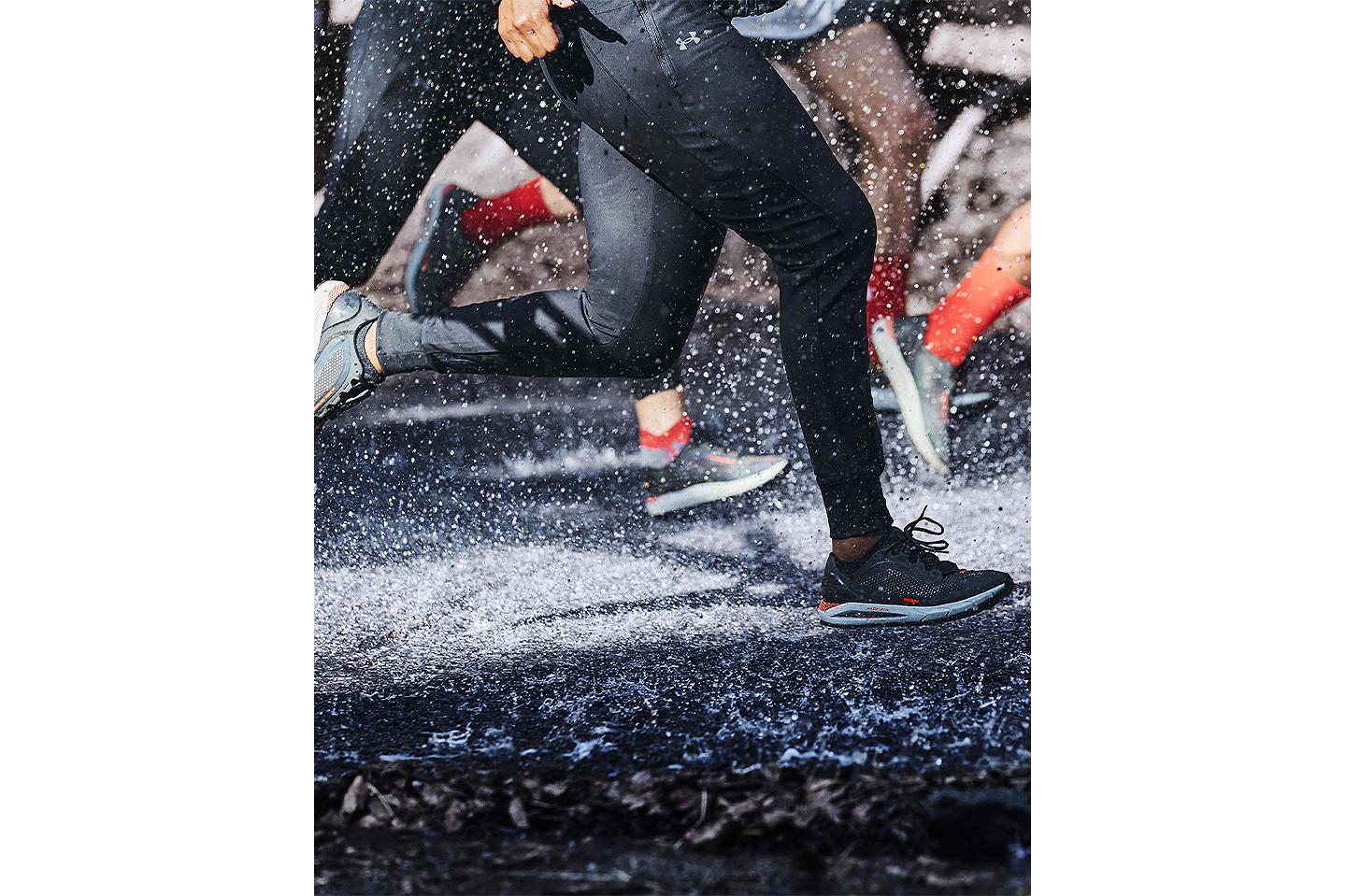
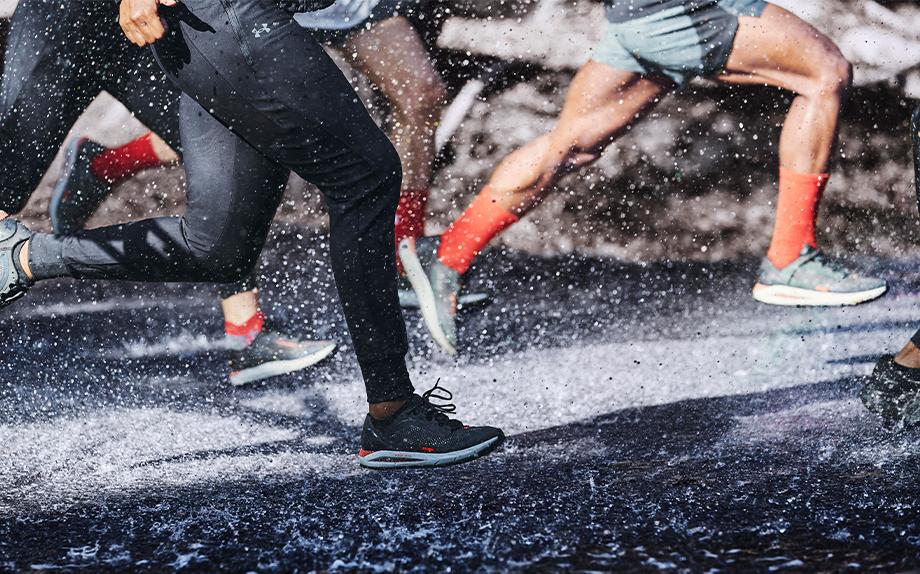
How to Dress for Running in Winter?
There are many known benefits to winter running, like boosting your metabolism and reducing seasonal emotional effects, not to mention getting out for a run is shown to improve your mental state, especially during the colder months. But dressing for a run in winter is very different to how you would dress in summer, with a few more steps and considerations to keep in mind.
How to Dress for Running in Winter?
There are many known benefits to winter running, like boosting your metabolism and reducing seasonal emotional effects, not to mention getting out for a run is shown to improve your mental state, especially during the colder months. But dressing for a run in winter is very different to how you would dress in summer, with a few more steps and considerations to keep in mind.
Shop Running Gear
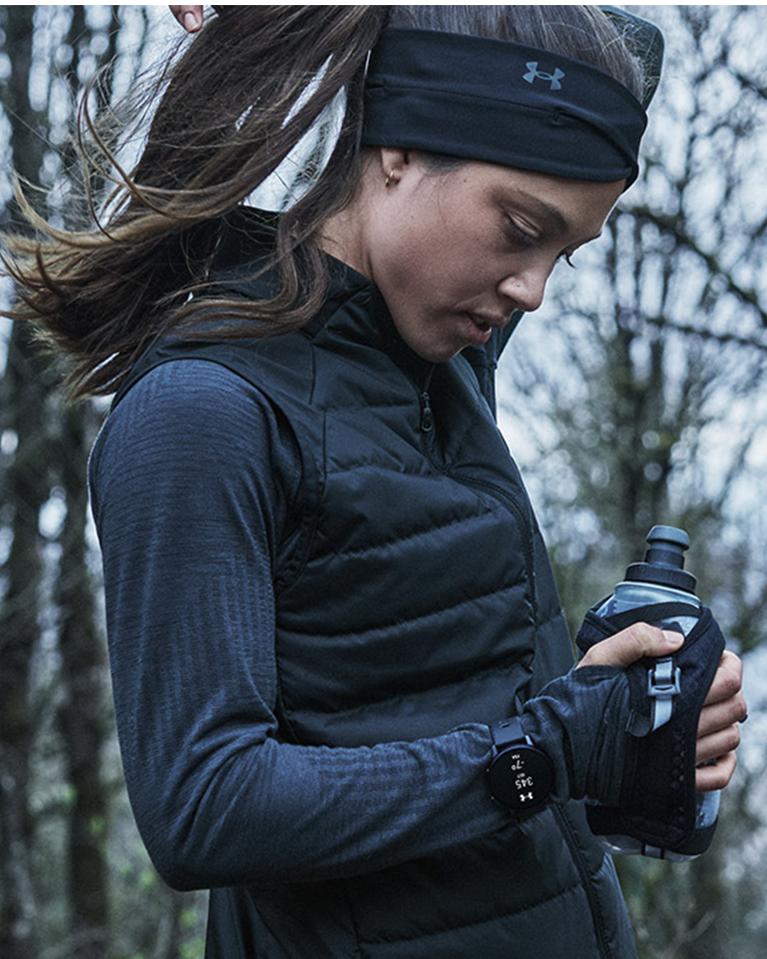
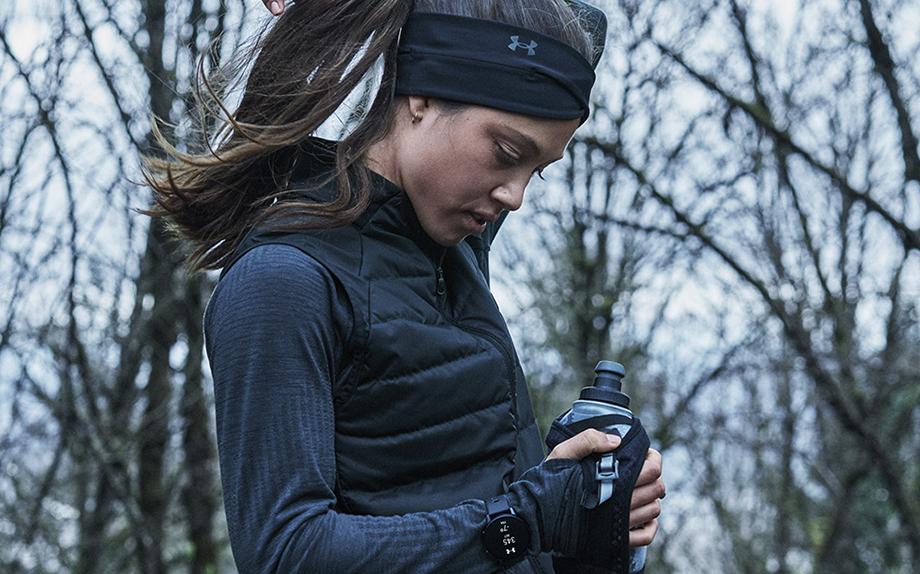
1. Dress for the Run, Not the Temperature Outside
One of the biggest misconceptions about winter running is that you have to bundle up with lots of layers just to feel ok heading out the door. This is not the case. When we run, our internal temperature can rise around 3-4 degrees due to excess energy expenditure, which means that your body builds up heat the more you move. So, with this in mind, it’s essential that, before you stack on heaps of layers, you dress for the run and not for the temperature.
Once your run is complete and you’re feeling hot from all the movement, it can be tempting to remain outdoors to cool off. High amounts of fluctuation in body temperature aren’t healthy long term, so make sure to get back to the car or back home as soon as possible, as your body temp will drop quickly once you’re not moving at the same pace.
1. Dress for the Run, Not the Temperature Outside
One of the biggest misconceptions about winter running is that you have to bundle up with lots of layers just to feel ok heading out the door. This is not the case. When we run, our internal temperature can rise around 3-4 degrees due to excess energy expenditure, which means that your body builds up heat the more you move. So, with this in mind, it’s essential that, before you stack on heaps of layers, you dress for the run and not for the temperature.
Once your run is complete and you’re feeling hot from all the movement, it can be tempting to remain outdoors to cool off. High amounts of fluctuation in body temperature aren’t healthy long term, so make sure to get back to the car or back home as soon as possible, as your body temp will drop quickly once you’re not moving at the same pace.
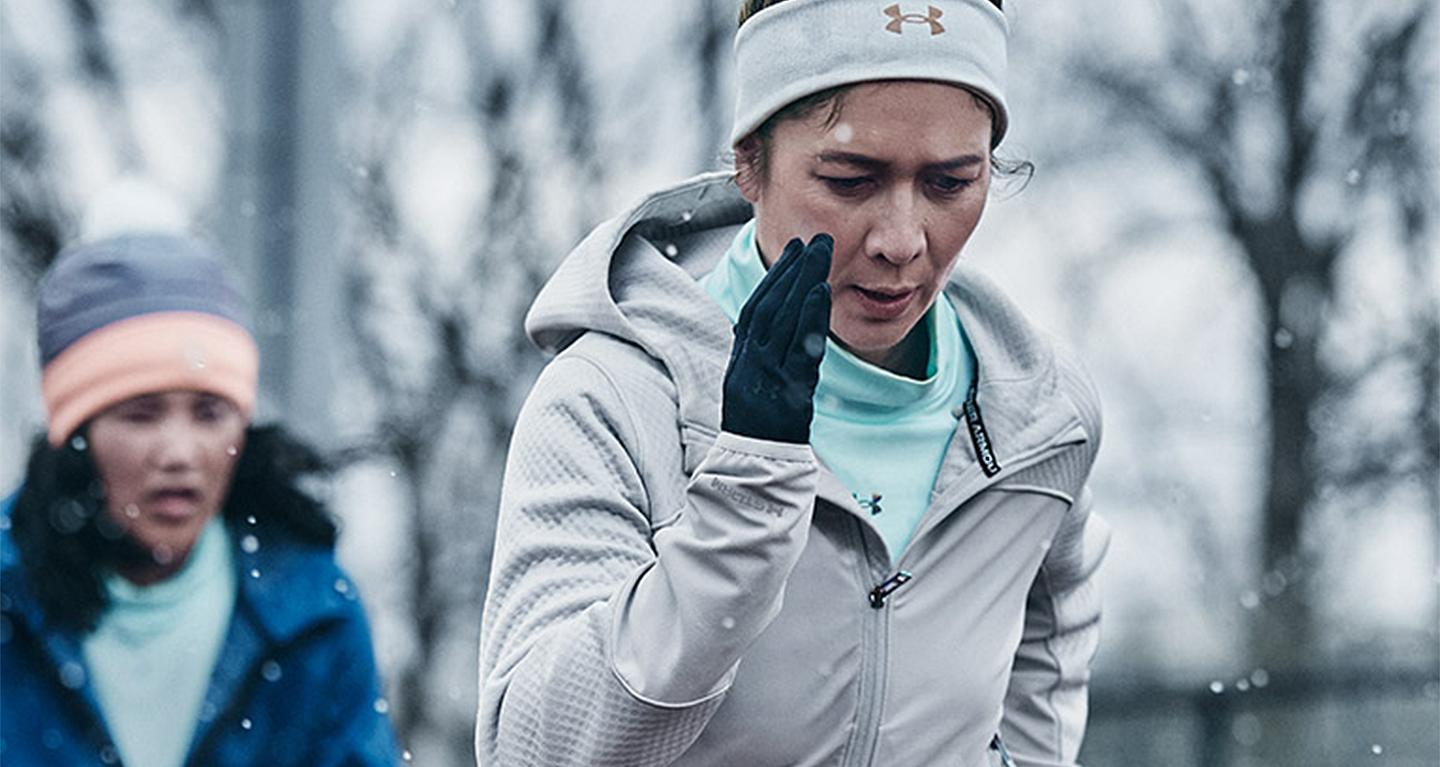
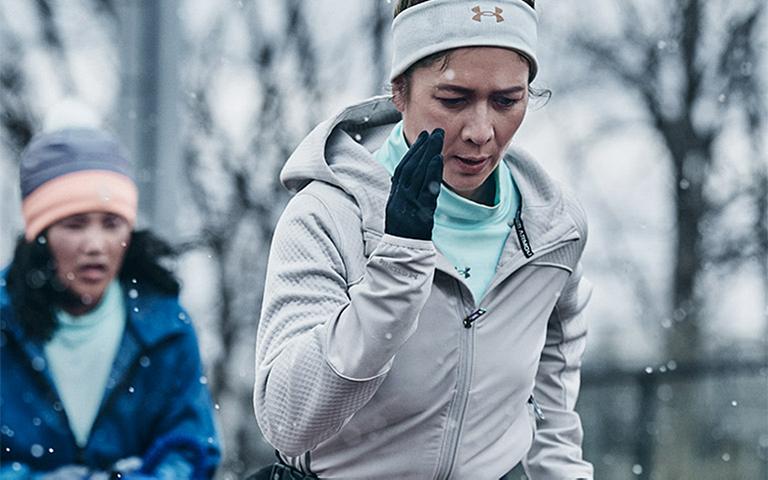
2. Layers are Key
Base Layer: This is the most important layer, as it’s the first to go on and the last to be removed. Your base layer is designed for temperatures where there is a noticeable, cooler shift in the air but not enough that you need extreme amounts of protection. Stick to lightweight clothing, like a moisture-wicking top, shorts or tights. Our UA HeatGear® range is the optimal base layer companion for cold weather running – with lightweight coverage that doesn’t weigh you down and sweat-wicking materials to help you stay dryer for longer. With only a slight chill in the air, you’ll stay comfortable.
Other accessories like gloves are good options for your base layer, helping to keep your extremities like your hands covered and protected as you brace against the cold wind and air.
Middle Layer: Your middle layer is the additional clothing you wear over your base layer for cold runs – best for temperatures where your base layer is no longer enough and you’re slightly cold even as you run for longer. For your middle layer, opt for lightweight options again but with tech designed to combat the chill. Make sure to choose items that can combat ice, rain, hail or snow.
Look for a long-sleeve top from our UA RUSH™collection that is designed to combat muscle fatigue when you're on a long run, putting the energy back in every time. Opt for lightweight tights that also offer compression for your legs as you push through the chill – increasing circulation and blood to avoid any stiffness. For your mid-layer, it’s also worth considering whether a light windbreaker would be necessary, especially if it is particularly windy. Our UA Storm windbreakers are super lightweight and breathable and can be wrapped around your waist mid-run if the workout begins to heat up.
Beanies, gloves, and a scarf are must-haves if you aren’t already wearing them as your base layer. Reflective gear is also a good option, like our UA Flow Velociti Elite running shoes that offer 360 degrees of reflectivity for increased visibility for low-light runs during the early or later parts of the day when it’s much darker than during the summer months.
Top Layer: Frigid temperatures call for a third top layer. For this layer, you need it to be insulating and waterproof, especially when running at very low temperatures. Our UA Storm down jackets make all the difference when you hit below zero-degree temperatures. With a slightly cropped fit to help you stay fluid and comfortable, you can easily layer underneath without feeling bulky.
Other considerations for your top layer include a fleece headband if you don’t like wearing a beanie and opting for a mid-layer jumper or hoodie with a hood that can also be worn while on your run to ensure that you don’t overheat.
2. Layers are Key
Base Layer: This is the most important layer, as it’s the first to go on and the last to be removed. Your base layer is designed for temperatures where there is a noticeable, cooler shift in the air but not enough that you need extreme amounts of protection. Stick to lightweight clothing, like a moisture-wicking top, shorts or tights. Our UA HeatGear® range is the optimal base layer companion for cold weather running – with lightweight coverage that doesn’t weigh you down and sweat-wicking materials to help you stay dryer for longer. With only a slight chill in the air, you’ll stay comfortable.
Other accessories like gloves are good options for your base layer, helping to keep your extremities like your hands covered and protected as you brace against the cold wind and air.
Middle Layer: Your middle layer is the additional clothing you wear over your base layer for cold runs – best for temperatures where your base layer is no longer enough and you’re slightly cold even as you run for longer. For your middle layer, opt for lightweight options again but with tech designed to combat the chill. Make sure to choose items that can combat ice, rain, hail or snow.
Look for a long-sleeve top from our UA RUSH™collection that is designed to combat muscle fatigue when you're on a long run, putting the energy back in every time. Opt for lightweight tights that also offer compression for your legs as you push through the chill – increasing circulation and blood to avoid any stiffness. For your mid-layer, it’s also worth considering whether a light windbreaker would be necessary, especially if it is particularly windy. Our UA Storm windbreakers are super lightweight and breathable and can be wrapped around your waist mid-run if the workout begins to heat up.
Beanies, gloves, and a scarf are must-haves if you aren’t already wearing them as your base layer. Reflective gear is also a good option, like our UA Flow Velociti Elite running shoes that offer 360 degrees of reflectivity for increased visibility for low-light runs during the early or later parts of the day when it’s much darker than during the summer months.
Top Layer: Frigid temperatures call for a third top layer. For this layer, you need it to be insulating and waterproof, especially when running at very low temperatures. Our UA Storm down jackets make all the difference when you hit below zero-degree temperatures. With a slightly cropped fit to help you stay fluid and comfortable, you can easily layer underneath without feeling bulky.
Other considerations for your top layer include a fleece headband if you don’t like wearing a beanie and opting for a mid-layer jumper or hoodie with a hood that can also be worn while on your run to ensure that you don’t overheat.
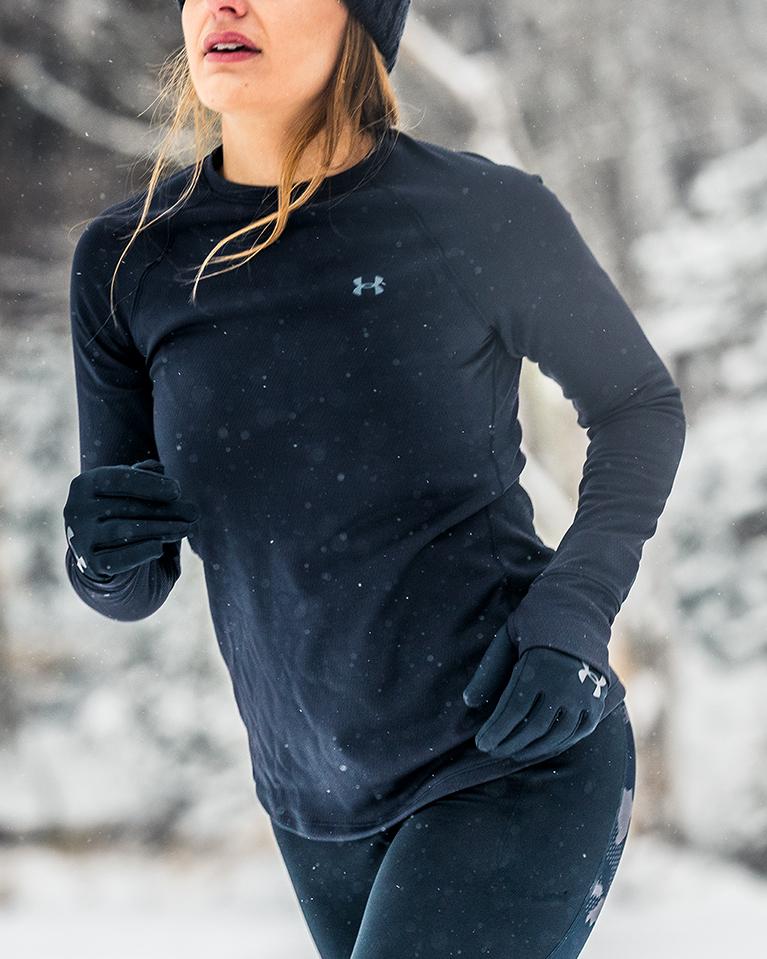
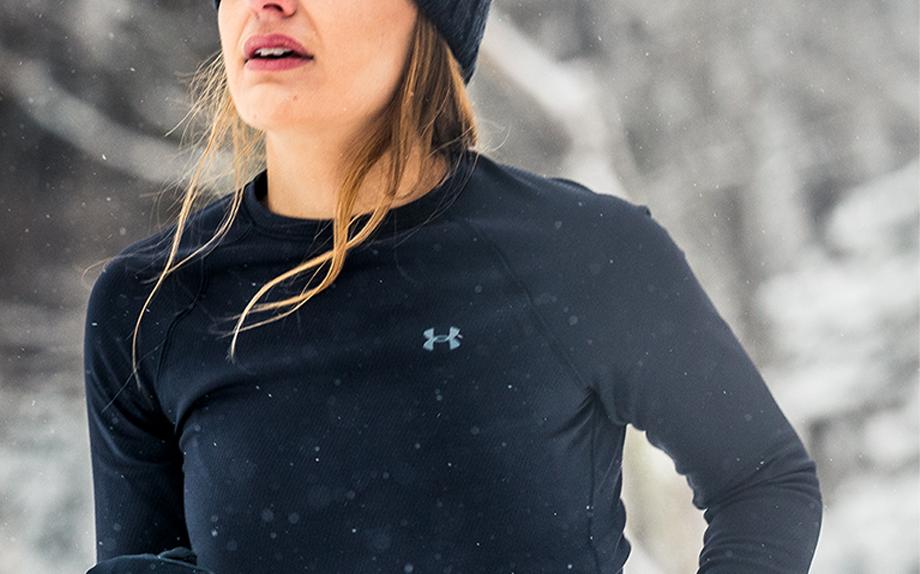
3. Consider Other Weather Factors
For wet, windy weather, you’ll want to take into account the “wind-chill factor”. When the temp outside becomes windy, it can dramatically affect the way the temp feels. So, when considering what to wear running, look at what the temperature ‘feels like’. For example, if the temperature outside is 15 degrees but it feels like eight degrees, you’ll want to add between five and 10 degrees to the lower temperature. This will help you stay warm and combat any wind changes.
3. Consider Other Weather Factors
For wet, windy weather, you’ll want to take into account the “wind-chill factor”. When the temp outside becomes windy, it can dramatically affect the way the temp feels. So, when considering what to wear running, look at what the temperature ‘feels like’. For example, if the temperature outside is 15 degrees but it feels like eight degrees, you’ll want to add between five and 10 degrees to the lower temperature. This will help you stay warm and combat any wind changes.
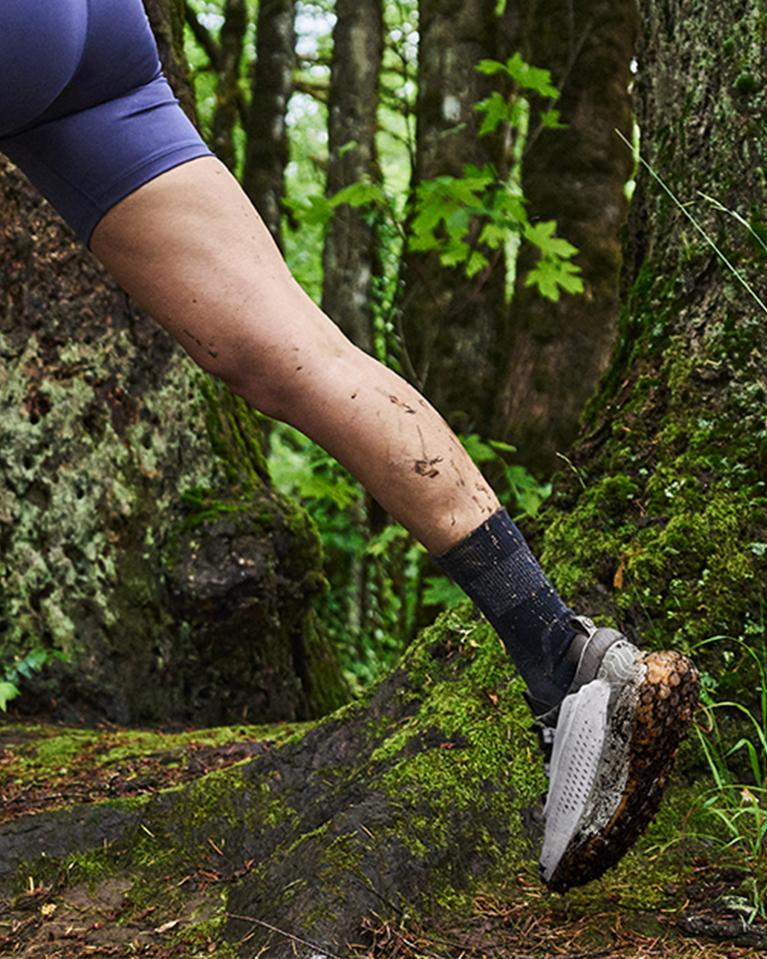
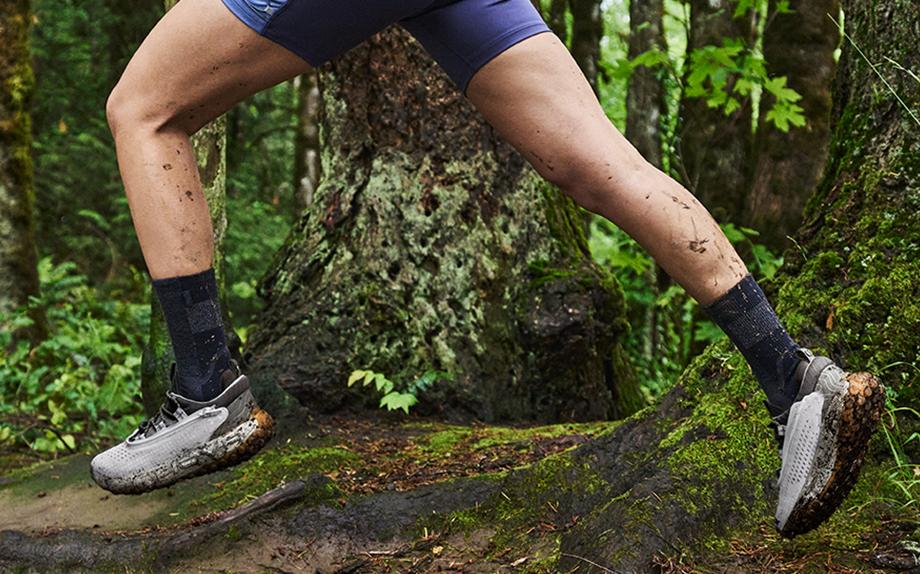
4. Choose Durable Running Shoes
For running in winter, it’s best to go with a shoe that can withstand everything you throw at it, including the mud, dirt and rain. Depending on the type of runs you do will determine the kind of running shoes you need for the cooler months:
Outdoor paved runs: Stick with running shoes that provide ultra springy pushback, like the UA HOVR™ Infinite 5, with a secure fit and soft cushioning to keep your legs feeling fresh for longer, which is super important when you’re running against the chill and frost.
Outdoor unpaved runs: Whether it’s an unpaved path, hiking trail or off-road jog, runs that aren’t on stable ground require shoes with a little more traction and a lot more waterproofing to keep your feet dry. Our UA HOVR™ Phantom 3 Storm Running Shoes are the ultimate go-to for wet and wintery, repelling water thanks to the treated uppers that are no less breathable for those intense workouts.
4. Choose Durable Running Shoes
For running in winter, it’s best to go with a shoe that can withstand everything you throw at it, including the mud, dirt and rain. Depending on the type of runs you do will determine the kind of running shoes you need for the cooler months:
Outdoor paved runs: Stick with running shoes that provide ultra springy pushback, like the UA HOVR™ Infinite 5, with a secure fit and soft cushioning to keep your legs feeling fresh for longer, which is super important when you’re running against the chill and frost.
Outdoor unpaved runs: Whether it’s an unpaved path, hiking trail or off-road jog, runs that aren’t on stable ground require shoes with a little more traction and a lot more waterproofing to keep your feet dry. Our UA HOVR™ Phantom 3 Storm Running Shoes are the ultimate go-to for wet and wintery, repelling water thanks to the treated uppers that are no less breathable for those intense workouts.

